Do you have a question about the Philips 50PFL5601 and is the answer not in the manual?
Describes display properties like black dots or bright points on the screen.
Statement regarding FCC compliance for Class B digital devices.
Guidelines for safe and stable placement of the TV unit.
Information on product recycling and end-of-life disposal.
Instructions for safely packing and transporting the TV.
Overview of the TV's capabilities and functions.
List of items included in the product package.
Step-by-step guide on how to safely remove the TV from its packaging.
Instructions for attaching the TV's base stands securely.
Guidance on safely lifting and moving the television unit.
Instructions for inserting batteries into the remote control.
Detailed explanation of all buttons and functions on the remote control.
Overview of buttons and indicators on the TV's physical control panel.
Description of all input and output ports on the television.
Guide for connecting various external signal sources to the TV.
Instructions for safely connecting the TV to a power outlet.
Details on connecting devices using HDMI for high-quality video and audio.
Guide for connecting devices with a DVI terminal using an HDMI cable.
Steps for establishing an internet connection via wired Ethernet.
Steps for establishing an internet connection via Wi-Fi.
Guidance on connecting a personal computer to the TV.
Instructions for using a USB memory stick for media playback.
How to turn the TV on and off or put it into standby.
Instructions for controlling the TV's audio volume.
Methods for changing between TV channels.
How to switch between TV and connected external devices.
Navigating and using the main TV interface menu.
Steps to create and manage lists of preferred TV channels.
Adjusting the TV screen's aspect ratio for different signals.
Accessing and configuring various TV settings via the options menu.
Guide to using the USB terminal for media playback.
Instructions for viewing photos via USB or home network.
Instructions for listening to music via USB or home network.
Instructions for playing movie files via USB or home network.
Accessing internet services and managing apps on the TV.
Guide to streaming personalized radio stations from Pandora.
Guides you to get the best picture and sound settings.
Accesses menus for picture, sound, and usage settings.
Guides you through the process of channel installation.
Guides you through setting up network connections.
Detailed options for adjusting picture quality and enhancements.
Detailed options for adjusting sound modes and volume.
Adjusts settings like captioning, sleep timer, and power indicator.
Manages the display of closed captions and digital text overlays.
Sets the TV to automatically enter standby mode after a set time.
Options related to TV installation and placement.
Sets the language for the on-screen display menus.
Adjusts power consumption and backlight brightness.
Adjusts HDMI connection settings for optimal performance.
Enables one-touch play and standby for linked devices.
Resets picture, sound, and channel settings to factory defaults.
Scans for and locates available TV channels.
Stores the found channels for viewing.
Sets up the TV for receiving antenna or cable signals.
Locks content based on age and content ratings.
Locks movies and shows based on MPAA ratings.
Sets regional rating locks for Canadian broadcasts.
Allows modification of the existing PIN code.
Guides through the initial setup for network connections.
Steps for connecting the TV to a wireless LAN.
Steps for connecting the TV via an Ethernet cable.
Manually configure network parameters like IP and proxy.
Choose between wired or wireless connection types.
Setup for connecting to a wireless access point (router).
Manually inputting the network name (SSID) for connection.
Configures IP address, subnet mask, and DNS settings.
Settings for using a proxy server for internet access.
Tests the home network and internet connection status.
Displays the current status of network settings.
Enables media streaming from certified home media servers.
Accesses internet services like movies and music directly on TV.
Returns all network settings to their default values.
Lists the equipment required for software updates.
Instructions for downloading the latest software file.
Method for updating the TV software using a USB memory stick.
Updating the TV software via an internet connection.
Accesses general software settings and version information.
Sets automatic update notifications for new software.
Wirelessly mirror smartphone, tablet, or PC screen to the TV.
Play media files stored on a home network server.
Instructions for viewing photos from a home network.
Instructions for listening to music from a home network.
Instructions for watching videos from a home network.
Frequently asked questions covering common issues and operations.
Guidance for resolving common TV operational problems.
Definitions of technical terms used in the manual.
Instructions for cleaning and servicing the TV unit.
Details the scope and duration of the product warranty.
Describes what defects and parts are covered by the warranty.
Lists conditions and circumstances not covered by the warranty.
Describes display properties like black dots or bright points on the screen.
Statement regarding FCC compliance for Class B digital devices.
Guidelines for safe and stable placement of the TV unit.
Information on product recycling and end-of-life disposal.
Instructions for safely packing and transporting the TV.
Overview of the TV's capabilities and functions.
List of items included in the product package.
Step-by-step guide on how to safely remove the TV from its packaging.
Instructions for attaching the TV's base stands securely.
Guidance on safely lifting and moving the television unit.
Instructions for inserting batteries into the remote control.
Detailed explanation of all buttons and functions on the remote control.
Overview of buttons and indicators on the TV's physical control panel.
Description of all input and output ports on the television.
Guide for connecting various external signal sources to the TV.
Instructions for safely connecting the TV to a power outlet.
Details on connecting devices using HDMI for high-quality video and audio.
Guide for connecting devices with a DVI terminal using an HDMI cable.
Steps for establishing an internet connection via wired Ethernet.
Steps for establishing an internet connection via Wi-Fi.
Guidance on connecting a personal computer to the TV.
Instructions for using a USB memory stick for media playback.
How to turn the TV on and off or put it into standby.
Instructions for controlling the TV's audio volume.
Methods for changing between TV channels.
How to switch between TV and connected external devices.
Navigating and using the main TV interface menu.
Steps to create and manage lists of preferred TV channels.
Adjusting the TV screen's aspect ratio for different signals.
Accessing and configuring various TV settings via the options menu.
Guide to using the USB terminal for media playback.
Instructions for viewing photos via USB or home network.
Instructions for listening to music via USB or home network.
Instructions for playing movie files via USB or home network.
Accessing internet services and managing apps on the TV.
Guide to streaming personalized radio stations from Pandora.
Guides you to get the best picture and sound settings.
Accesses menus for picture, sound, and usage settings.
Guides you through the process of channel installation.
Guides you through setting up network connections.
Detailed options for adjusting picture quality and enhancements.
Detailed options for adjusting sound modes and volume.
Adjusts settings like captioning, sleep timer, and power indicator.
Manages the display of closed captions and digital text overlays.
Sets the TV to automatically enter standby mode after a set time.
Options related to TV installation and placement.
Sets the language for the on-screen display menus.
Adjusts power consumption and backlight brightness.
Adjusts HDMI connection settings for optimal performance.
Enables one-touch play and standby for linked devices.
Resets picture, sound, and channel settings to factory defaults.
Scans for and locates available TV channels.
Stores the found channels for viewing.
Sets up the TV for receiving antenna or cable signals.
Locks content based on age and content ratings.
Locks movies and shows based on MPAA ratings.
Sets regional rating locks for Canadian broadcasts.
Allows modification of the existing PIN code.
Guides through the initial setup for network connections.
Steps for connecting the TV to a wireless LAN.
Steps for connecting the TV via an Ethernet cable.
Manually configure network parameters like IP and proxy.
Choose between wired or wireless connection types.
Setup for connecting to a wireless access point (router).
Manually inputting the network name (SSID) for connection.
Configures IP address, subnet mask, and DNS settings.
Settings for using a proxy server for internet access.
Tests the home network and internet connection status.
Displays the current status of network settings.
Enables media streaming from certified home media servers.
Accesses internet services like movies and music directly on TV.
Returns all network settings to their default values.
Lists the equipment required for software updates.
Instructions for downloading the latest software file.
Method for updating the TV software using a USB memory stick.
Updating the TV software via an internet connection.
Accesses general software settings and version information.
Sets automatic update notifications for new software.
Wirelessly mirror smartphone, tablet, or PC screen to the TV.
Play media files stored on a home network server.
Instructions for viewing photos from a home network.
Instructions for listening to music from a home network.
Instructions for watching videos from a home network.
Frequently asked questions covering common issues and operations.
Guidance for resolving common TV operational problems.
Definitions of technical terms used in the manual.
Instructions for cleaning and servicing the TV unit.
Details the scope and duration of the product warranty.
Describes what defects and parts are covered by the warranty.
Lists conditions and circumstances not covered by the warranty.
| Screen shape | Flat |
|---|---|
| Response time | 9 ms |
| Display diagonal | 50 \ |
| Display brightness | - cd/m² |
| Display technology | LED |
| Native aspect ratio | 16:9 |
| Supported video modes | 480i, 480p, 720p, 1080i, 1080p, 2160p |
| Contrast ratio (typical) | 5000:1 |
| Display diagonal (metric) | 127 cm |
| Screen format adjustments | 4:3, 14:9, 16:9 |
| Supported graphics resolutions | 640 x 480 (VGA), 720 x 480, 800 x 600 (SVGA), 1024 x 768 (XGA), 1280 x 1024 (SXGA), 1280 x 768 (WXGA), 1360 x 768 (WXGA), 1440 x 1050, 1440 x 900 (WXGA+), 1680 x 1050 (WSXGA+), 1920 x 1080 (HD 1080), 3840 x 2160, 4096 x 2160 |
| Motion interpolation technology | PMR (Perfect Motion Rate) |
| Equalizer | Yes |
| RMS rated power | 20 W |
| Number of speakers | 2 |
| Equalizer bands quantity | 5 |
| AC input voltage | 120 V |
| AC input frequency | 60 Hz |
| Power consumption (standby) | 0.5 W |
| Power consumption (typical) | 125 W |
| On/off switch | - |
| Product color | Black |
| Panel mounting interface | 400 x 300 mm |
| Audio formats supported | AAC, MP3 |
| Video formats supported | ASP, AVC, H.264, H.265, MPEG1, MPEG2 |
| Picture processing technology | Philips Pixel Plus UltraHD |
| Bundled software | Netflix, Pandora, Vudu, YouTube, Hotlist, Samba, Xumo |
| Built-in speaker(s) | No |
| RF connector type | F |
| RF ports quantity | 1 |
| HDMI ports quantity | 3 |
| DVI-D ports quantity | 0 |
| USB 2.0 ports quantity | USB 2.0 ports have a data transmission speed of 480 Mbps, and are backwards compatible with USB 1.1 ports. You can connect all kinds of peripheral devices to them. |
| Tuner type | Analog & digital |
| Supported TV bands | UHF, VHF |
| Analog signal format system | NTSC |
| Digital signal format system | ATSC |
| Wi-Fi standards | Wi-Fi 5 (802.11ac) |
| Operating temperature (T-T) | 5 - 40 °C |
| Package depth | 177.8 mm |
| Package width | 1310.64 mm |
| Package height | 772.16 mm |
| Package weight | 16000 g |
| Cables included | AC |
| Depth (with stand) | 220.98 mm |
|---|---|
| Height (with stand) | 739.14 mm |
| Weight (with stand) | 11800 g |
| Depth (without stand) | 109.22 mm |
| Width (without stand) | 1143 mm |
| Height (without stand) | 688.34 mm |
| Weight (without stand) | 11600 g |
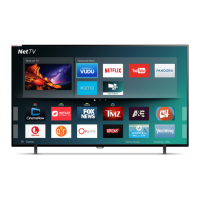
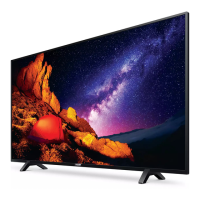
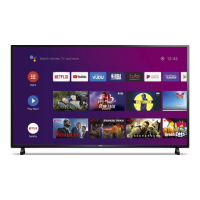



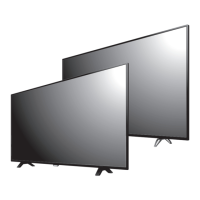

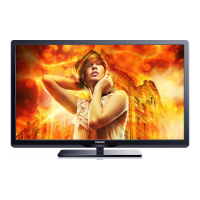


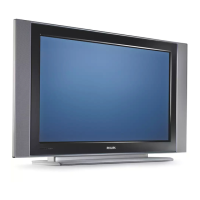
